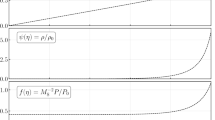Summary
Photons in the visible range form the basis of astronomy. They move in straight lines, which preserves source information, but they arise only very indirectly from nuclear or high-energy processes. Cosmic-ray particles, on the other hand, arise directly from high-energy processes in astronomical objects of various classes, but carry no information about source direction. Radio emissions are still more complex in origin. But γ-rays arise rather directly in nuclear or high-energy processes, and yet travel in straight lines. Processes which might give rise to continuous and discrete γ-ray spectra in astronomical objects are described, and possible source directions and intensities are estimated. Present limits were set by observations with little energy or angular discrimination; γ-ray studies made at balloon altitudes, with feasible discrimination, promise valuable information not otherwise attainable.
Riassunto
L’Astronomia si basa sull’osservazione dei fotoni dello spettro visibile; questi fotoni si propagano in linea retta, quindi forniscono informazioni sulla direzione délle sorgenti; essi tuttavia sono prodotti solo molto indirettamente dai processi nucleario di alta energia che hanno luogo nei corpi celesti. Le particelle dei raggi cosmici, d’altra. parte, sono prodotte direttamente da processi di alta energia che hanno luogo in oggetti astronomici di vario tipo, ma non forniscono informazione alouna circa la direzione delle sorgenti. I raggi γ, invece, sono creati in modo più diretto in processi nucleari o di alta energia, e si propagano in linea retta. Si descrivono vari processi che possono dar luogo a spettri continui e discreti di raggi γ in oggetti astronomici e si valutano possibili direzioni e intensità di sorgenti. Si fa infine notare che le poche misnre sin qui eseguite sui raggi-γ nell’alta atmosfera soffrono di inadeguata. risoluzione angolare ed energetica, ma che misure fatte con apparati di ragionevole potere risolutivo ad altezze raggiungibili con palloni, potrebbero fornire informazioni preziose, non ottenibili per altra via.
Similar content being viewed by others
References
B. Rossi andR. Hulsizer:Phys. Rev.,76, 164 (1949).
C. Critchfield, E. Ney andS. Oleksa:Phys. Rev.,85, 461 (1952).
T. Bergstrahl andC. Schroeder:Phys. Rev.,81, 244 (1951);L. Reiffel andG. M. Burgwald:Phys. Rev.,95, 1294 (1954).
The rocket results are summarized inRocket Exploration of the Upper Atmosphere,R. Boyd andM. Seaton, editors (London, 1954), p. 306, byC. Johnson, L. Davies andJ. Siry.
W. H. Barkas et al:Phys. Rev.,105, 1037 (1957).
A. Boischot:Compt. Rend.,244, 1326,
G. R. Burbidge andF. Hoyle:Nuovo Cimento,4, 558 (1956).
Author information
Authors and Affiliations
Rights and permissions
About this article
Cite this article
Morrison, P. On gamma-ray astronomy. Nuovo Cim 7, 858–865 (1958). https://doi.org/10.1007/BF02745590
Received:
Published:
Issue Date:
DOI: https://doi.org/10.1007/BF02745590




